-
 Bitcoin
Bitcoin $117,784.8122
6.03% -
 Ethereum
Ethereum $2,985.4492
7.49% -
 Tether USDt
Tether USDt $1.0002
-0.01% -
 XRP
XRP $2.6273
7.19% -
 BNB
BNB $688.8144
2.80% -
 Solana
Solana $164.1797
4.18% -
 USDC
USDC $0.9999
-0.01% -
 Dogecoin
Dogecoin $0.1989
10.08% -
 TRON
TRON $0.2961
2.12% -
 Cardano
Cardano $0.7259
15.27% -
 Hyperliquid
Hyperliquid $45.6326
10.22% -
 Sui
Sui $3.5222
9.17% -
 Chainlink
Chainlink $15.4621
7.77% -
 Bitcoin Cash
Bitcoin Cash $523.2404
1.57% -
 Stellar
Stellar $0.3163
8.13% -
 Avalanche
Avalanche $21.0098
7.48% -
 Hedera
Hedera $0.2044
14.78% -
 UNUS SED LEO
UNUS SED LEO $8.9812
0.11% -
 Shiba Inu
Shiba Inu $0.0...01346
7.75% -
 Toncoin
Toncoin $2.9763
3.02% -
 Litecoin
Litecoin $95.6221
5.22% -
 Polkadot
Polkadot $3.9508
7.50% -
 Monero
Monero $326.6734
1.59% -
 Uniswap
Uniswap $8.9185
8.19% -
 Dai
Dai $0.9999
-0.02% -
 Pepe
Pepe $0.0...01271
14.28% -
 Ethena USDe
Ethena USDe $1.0006
-0.03% -
 Bitget Token
Bitget Token $4.5228
2.14% -
 Aave
Aave $314.1302
6.41% -
 Pi
Pi $0.4909
0.64%
How to securely generate randomness in a smart contract?
Secure randomness in smart contracts is vital, as on-chain data like block timestamps or hashes are predictable, making traditional methods vulnerable to manipulation.
Jul 11, 2025 at 03:56 pm
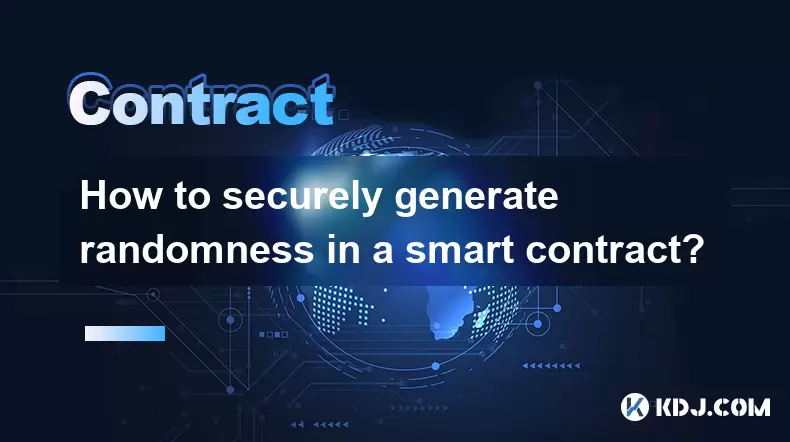
Understanding the Challenge of Randomness in Smart Contracts
In the blockchain and smart contract environment, generating secure randomness is a non-trivial task. Unlike centralized systems where trusted hardware or external APIs can provide unpredictable values, blockchain networks are deterministic by design, meaning every node must reach consensus on the outcome of any operation. This makes traditional random number generation techniques unsuitable.
One key issue is that on-chain data such as block timestamps, hashes, or transaction IDs are predictable or manipulable. If a smart contract uses these as entropy sources, malicious actors may exploit this to gain unfair advantages. Therefore, understanding how to generate secure randomness without compromising decentralization or trustlessness is essential.
Common Pitfalls When Generating On-Chain Randomness
Many developers fall into traps when attempting to generate randomness within smart contracts:
- Using block.timestamp: This value is easily influenced by miners and cannot be considered truly random.
- Relying on blockhash of recent blocks: Although it appears random, miners can manipulate or choose not to publish certain blocks if they stand to lose from the result.
- Hashing contract variables like msg.sender or balances: These values are publicly visible and thus exploitable.
Each of these methods introduces vulnerabilities that attackers can exploit through simulation or manipulation. It's crucial to avoid them unless used in conjunction with off-chain components or cryptographic commitments.
Commit-Reveal Scheme: A Secure Approach
A widely accepted method for generating secure randomness is the commit-reveal scheme. This technique ensures that no party can know or influence the final random value before it is revealed.
Here’s how it works:
- Participants first submit a hashed commitment (e.g., keccak256(randomValue + secretSalt)) instead of the actual value.
- After a predefined time or event window, participants reveal their original randomValue and salt.
- The contract verifies that the hash matches the revealed values and combines all inputs to produce the final random seed.
This approach prevents front-running and ensures fairness because no one can determine others’ inputs until after all commitments are made.
Using Chainlink VRF for Trustless Randomness
One of the most reliable solutions currently available is Chainlink Verifiable Random Function (VRF). It provides an on-demand source of randomness backed by cryptographic proofs.
The process involves the following steps:
- A smart contract requests randomness from the Chainlink oracle.
- The oracle generates a random number along with a cryptographic proof using its private key.
- The contract receives the number and verifies the proof on-chain before accepting it.
This ensures that the randomness is both unpredictable and tamper-proof, making it suitable for applications like NFT drops, lottery systems, or game mechanics.
To implement Chainlink VRF:
- Deploy your contract with the VRFConsumerBase contract imported.
- Fund your contract with LINK tokens.
- Call the requestRandomness() function with the appropriate keyHash and fee.
- Override the fulfillRandomness() callback to receive and use the generated value.
Leveraging Off-Chain Oracle Solutions
Besides Chainlink, other oracle services also offer randomness generation capabilities. These include Witnet, API3, and Oraclize, which act as bridges between the blockchain and real-world data.
These services typically work by:
- Accepting a randomness request from the smart contract.
- Generating the number using a secure external source.
- Submitting the result back to the chain with a signature or proof.
While this adds a layer of centralization, many of these platforms employ decentralized oracle networks and robust verification mechanisms to maintain security and fairness.
It’s important to ensure that the oracle service you choose has transparent auditing processes and strong cryptographic guarantees to prevent manipulation.
Frequently Asked Questions
Q: Can I use the blockhash of a future block to generate randomness?
A: While using the blockhash of a future block may seem unpredictable, it still poses risks. Miners have the ability to withhold blocks if they do not benefit from the resulting hash, especially in high-stakes scenarios. Hence, it’s not recommended for critical applications.
Q: Is it safe to combine multiple entropy sources in a smart contract?
A: Combining multiple entropy sources can increase unpredictability but doesn't inherently solve the problem of manipulation. Unless each input is committed and revealed securely, attackers may still find ways to exploit the system.
Q: How does Chainlink VRF prevent manipulation by the oracle?
A: Chainlink VRF uses cryptographic proofs that verify the randomness was generated correctly using a known public key. Even if the oracle is compromised, it cannot forge a valid proof without access to the corresponding private key.
Q: Are there gas-efficient alternatives to Chainlink VRF?
A: Yes, some lightweight protocols offer cheaper randomness at the cost of reduced security guarantees. However, for mission-critical applications, it's advisable to prioritize verifiability and security over cost efficiency.
Disclaimer:info@kdj.com
The information provided is not trading advice. kdj.com does not assume any responsibility for any investments made based on the information provided in this article. Cryptocurrencies are highly volatile and it is highly recommended that you invest with caution after thorough research!
If you believe that the content used on this website infringes your copyright, please contact us immediately (info@kdj.com) and we will delete it promptly.
- Binance and the Future of Sharia-Compliant Multi-Token Staking: A New Frontier?
- 2025-07-11 22:50:12
- Bitcoin Blasts Past $118,000: What's Fueling This Price Surge?
- 2025-07-11 22:30:11
- TRON, Stablecoins, and Settlements: A New Era?
- 2025-07-11 22:50:12
- Shytoshi Kusama, SHIB, and the AI Tweet: Decoding the Future
- 2025-07-11 22:30:12
- Bitcoin's Wild Ride: All-Time Highs, Surges, and What's Next!
- 2025-07-11 22:15:11
- Dogecoin's Legacy: Can New Token Little Pepe Conquer the Market Cap?
- 2025-07-11 22:15:11
Related knowledge
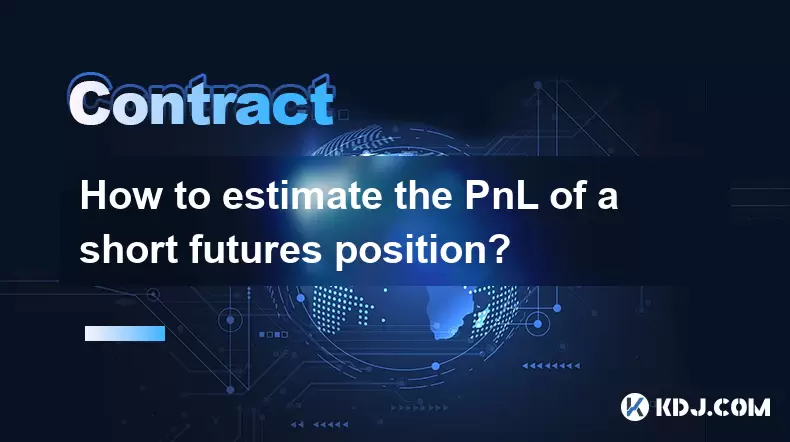
How to estimate the PnL of a short futures position?
Jul 10,2025 at 05:00pm
Understanding the Basics of Futures Trading and PnLIn futures trading, a trader enters into a contract to buy or sell an asset at a predetermined pric...
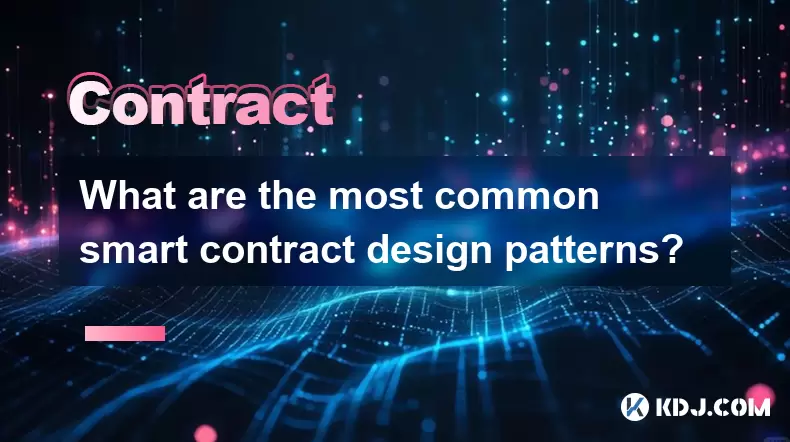
What are the most common smart contract design patterns?
Jul 10,2025 at 09:29pm
Introduction to Smart Contract Design PatternsSmart contract design patterns are standardized solutions to recurring problems encountered during the d...
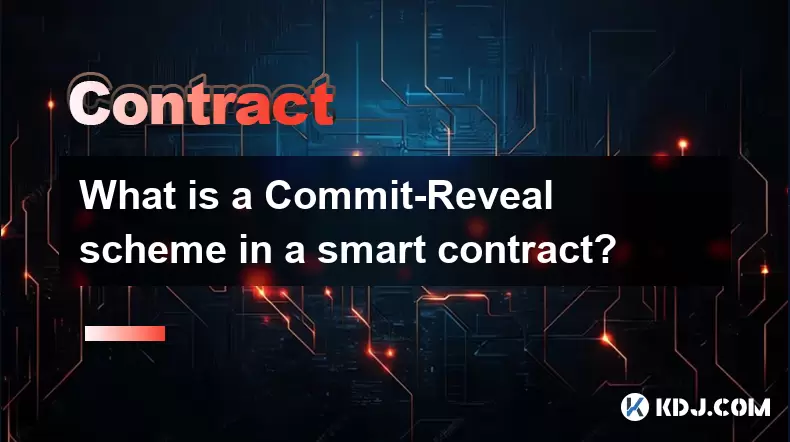
What is a Commit-Reveal scheme in a smart contract?
Jul 10,2025 at 05:22pm
Understanding the Concept of a Commit-Reveal SchemeIn the realm of blockchain and smart contracts, privacy and fairness are often critical concerns, e...
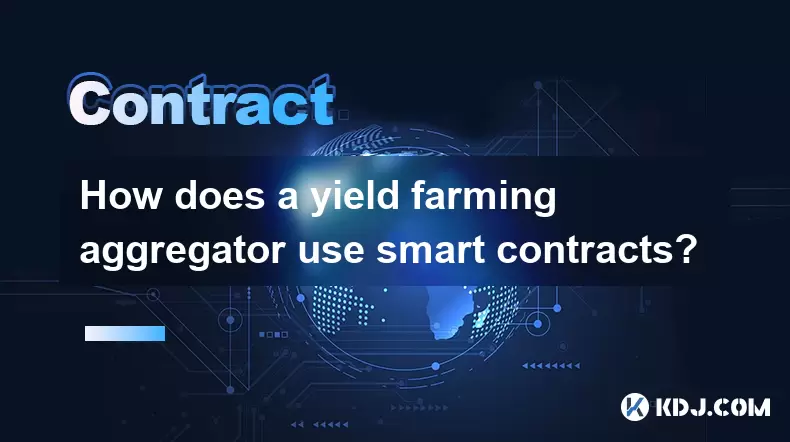
How does a yield farming aggregator use smart contracts?
Jul 11,2025 at 02:49am
Understanding the Role of Smart Contracts in Yield Farming AggregatorsA yield farming aggregator leverages smart contracts to automate and optimize th...
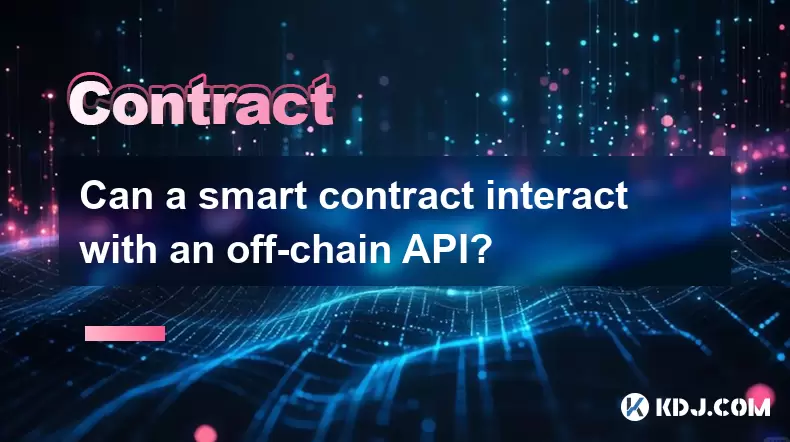
Can a smart contract interact with an off-chain API?
Jul 10,2025 at 09:42pm
What is a Smart Contract?A smart contract is a self-executing contract with the terms of the agreement directly written into lines of code. These cont...
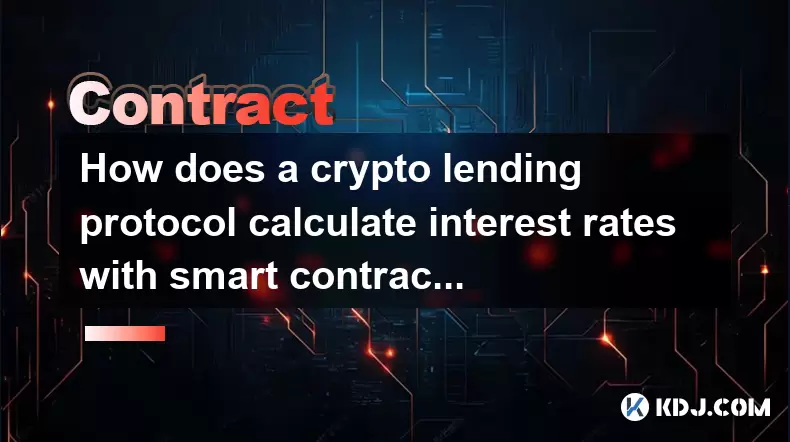
How does a crypto lending protocol calculate interest rates with smart contracts?
Jul 11,2025 at 07:21am
Understanding the Basics of Crypto Lending ProtocolsCrypto lending protocols operate on blockchain networks using smart contracts to automate the proc...

How to estimate the PnL of a short futures position?
Jul 10,2025 at 05:00pm
Understanding the Basics of Futures Trading and PnLIn futures trading, a trader enters into a contract to buy or sell an asset at a predetermined pric...

What are the most common smart contract design patterns?
Jul 10,2025 at 09:29pm
Introduction to Smart Contract Design PatternsSmart contract design patterns are standardized solutions to recurring problems encountered during the d...

What is a Commit-Reveal scheme in a smart contract?
Jul 10,2025 at 05:22pm
Understanding the Concept of a Commit-Reveal SchemeIn the realm of blockchain and smart contracts, privacy and fairness are often critical concerns, e...

How does a yield farming aggregator use smart contracts?
Jul 11,2025 at 02:49am
Understanding the Role of Smart Contracts in Yield Farming AggregatorsA yield farming aggregator leverages smart contracts to automate and optimize th...

Can a smart contract interact with an off-chain API?
Jul 10,2025 at 09:42pm
What is a Smart Contract?A smart contract is a self-executing contract with the terms of the agreement directly written into lines of code. These cont...

How does a crypto lending protocol calculate interest rates with smart contracts?
Jul 11,2025 at 07:21am
Understanding the Basics of Crypto Lending ProtocolsCrypto lending protocols operate on blockchain networks using smart contracts to automate the proc...
See all articles

























































































